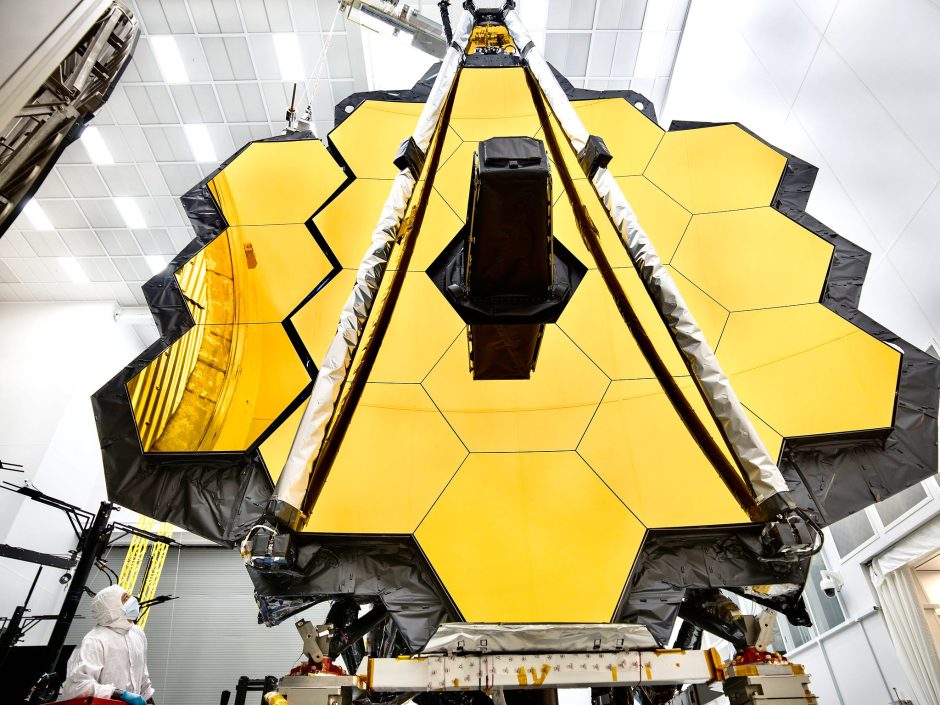
The James Webb Space Telescope is being prepared for testing at NASA's Johnson Space Center in Houston. It successfully launched into space on Dec. 25, 2021. Photo courtesy of NASA/Chris Gunn.
Oct. 3, 2022
Contact: Eric Stann, 573-882-3346, StannE@missouri.edu
Ever since he was a child, University of Missouri astrophysicist Aigen Li has wondered about the mysteries of space, asking questions like “Why do stars shine?” and “Are there life forms beyond those that exist on Earth?” Now, his boyhood dreams are coming true as he eagerly awaits his chance this fall to study images taken by NASA’s James Webb Space Telescope (JWST) of a galaxy named M82 — located 12 million light years away from Earth.
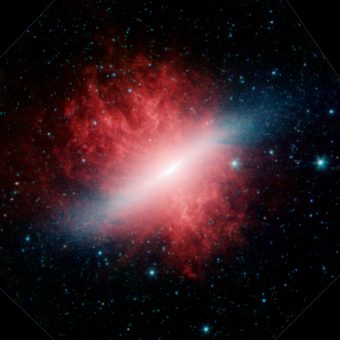
An infrared view of the M82 galaxy taken by NASA's Spitzer Space Telescope in 2006. NASA's new telescope will provide Li with a more clear image of the M82 galaxy. Photo courtesy of NASA/JPL-Caltech/C. Engelbracht
By examining more than 10 hours of infrared images and data from the M82 galaxy, Li will use the information he collects for his research in understanding the important role cosmic dust plays in the formation of stars and galaxies.
“M82’s star formation activities are very violent and strong, as compared to a normal galaxy like our Milky Way Galaxy,” said Li, a Curators Distinguished Professor of Astronomy. “The Milky Way Galaxy produces an average of three stars each year, while M82 is considered as a typical starburst galaxy making an average of 100 stars a year.”
Infrared light is invisible to the human eye. But, for scientists like Li, the infrared images that JWST is taking of distant galaxies are invaluable for their research because it allows them to see through the clouds of cosmic dust that hide the birth of stars from the view of astronomers using telescopes on the Earth’s surface. On Earth, these areas of space usually appear as cloudy or dark spots.
“JWST is essentially a [cosmic] dust telescope,” Li said.
Li’s upcoming work with JWST also brings to light MU’s historical ties to a pair of famous American astronomers, Fredrick Hanley Seares and Harlow Shapley. Seares taught at MU for eight years and is instrumental in the development of the photometric system that’s still widely used today in astronomy. One of Seares’ students was Shapley, who is largely credited for his work to expand knowledge surrounding the Milky Way Galaxy, including the removal of the sun from the center of the galaxy.
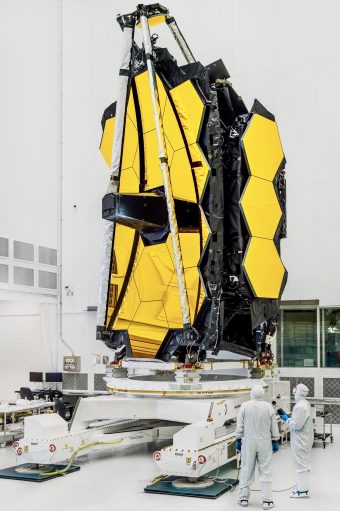
NASA's James Webb Space Telescope is shown in its stowed position for flight. Photo courtesy of NASA/Chris Gunn.
When Li wrote a review on the history of cosmic dust studies, he was amazed to find a research study written by Seares in 1940 called “The dust of space’’ — the exact topic of Li’s expertise.
“It’s like I’m now carrying on part of Seares’ legacy,” said Li, who joined MU’s faculty in 2004. “We have a long, glorious history of astronomy at MU, and I’m proud to be a part of that.”
Infant face of the universe
Dying stars release “clouds” of cosmic dust into space. Like how a fingerprint is used as a marker of human identification, Li said cosmic dust can carry bits and pieces of matter from stars along with it as it moves within a galaxy or even between different galaxies.
By understanding how cosmic dust moves and emits light, Li said scientists can better comprehend how galaxies — and stars themselves — formed billions of years ago at the beginning of the universe.
“For the very distant galaxies, what we’re seeing now [with JWST] is when they were babies, or the infant face of the universe, so to speak,” Li said. “In order to see what the galaxies look like today, we must wait billions of years or so to see the light they are emitting now.”

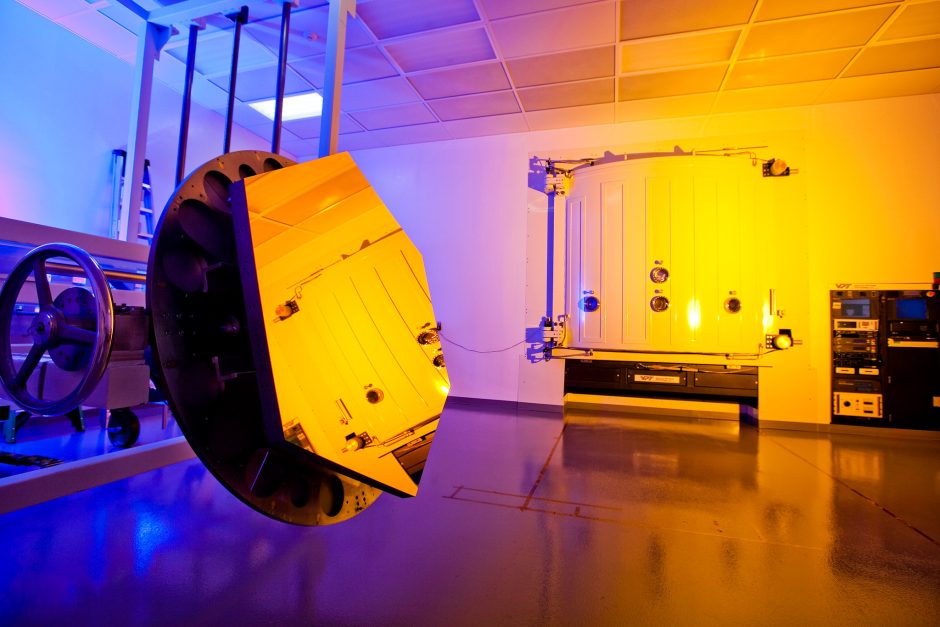

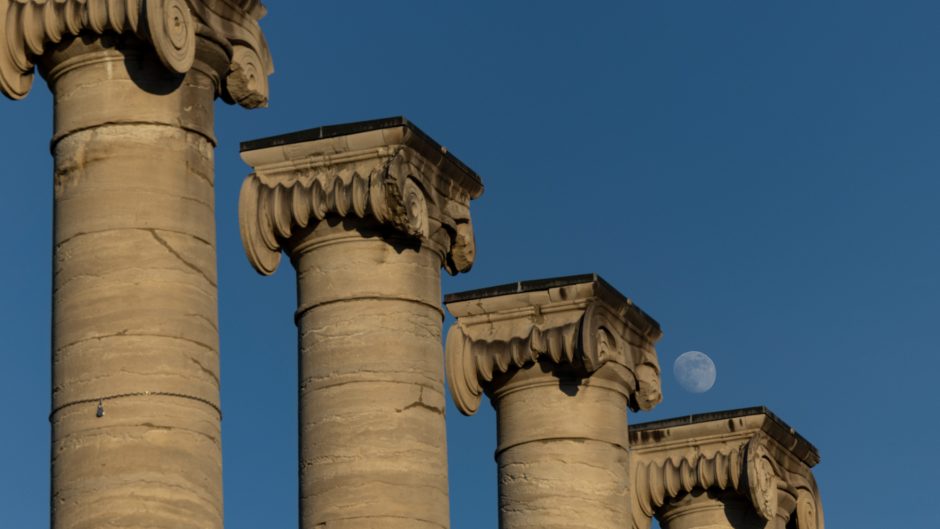
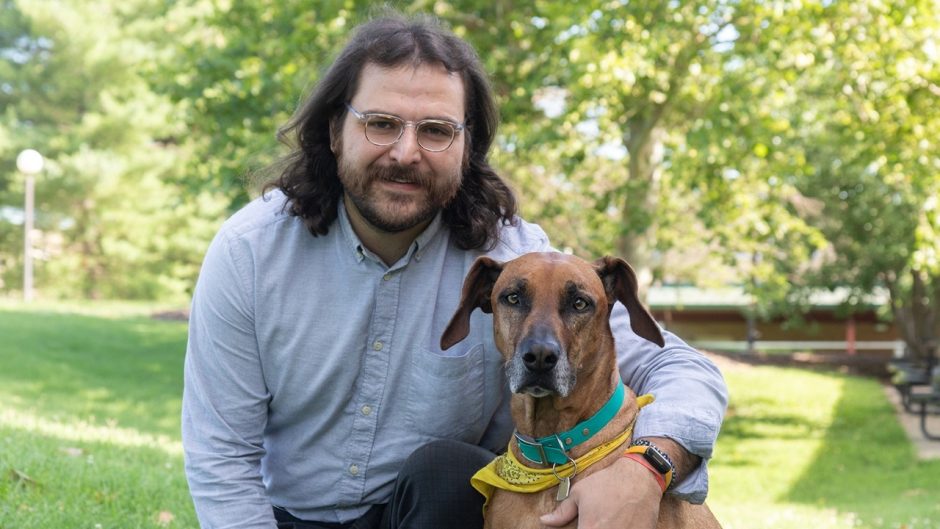
![062625_CEI Aerial View_email-cropped[29] (1)](https://showme.missouri.edu/wp-content/uploads/2025/06/062625_CEI-Aerial-View_email-cropped29-1-940x529.jpg)